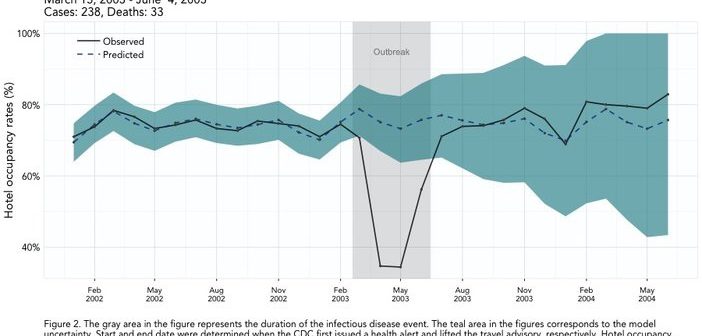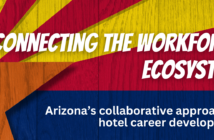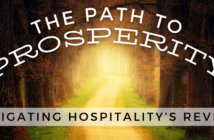Creating a resilient tourism industry
by Mark Gallivan and Jaclyn Guerrero
Physical damage caused by natural catastrophes such as hurricanes, floods, and earthquakes can capture headlines and be reported as a common metric for the impact to businesses. For hoteliers, this logic is especially true, because without property, there is no business. However, physical damage is only one way a disaster can negatively impact a hotel’s balance sheet. There are many other types of disasters, including infectious disease events, which can cause a similar shock to a hotel’s revenue without ever causing damage to the property. As we have seen historically, these impacts can be just as damaging and can have long-term effects.
Recent Revenue Loss from Zika
Most recently, Zika virus took the Americas by a storm. Though Zika was first discovered in 1947, it caused only relatively minor outbreaks in Africa and Asia before being identified in Brazil in May 2015. By the time the World Health Organization (WHO) declared the Latin America Zika outbreak a Public Health Emergency of International Concern because of the association with birth defects and neurological disorders, Zika had spread to more than 20 countries and territories in the Americas. Impacts from the outbreak extended beyond the obvious health implications with significant economic losses realized as well. A United Nations report found Zika’s short-term economic loss in Latin America could reach $18 billion, with the majority of the impact driven by declines in tourism as the public reacted fearfully to the risks presented by the virus.

Figure 1
A significant decrease in hotel occupancy rates followed the WHO emergency announcement in Cabo San Lucas, Mexico. In the first two years of the outbreak, hotels in the Baja California city suffered losses in occupancy for more than nine months (See Figure 1). In Cabo San Lucas, the nine-month impact of Zika on occupancy rates is comparable to those observed in the three months following Hurricane Odile – the most intense hurricane to hit Baja California in recent history.
The Significance of SARS
Infectious diseases can also have an acute and severe impact similar to a physical natural disaster. One of the most notable examples is the 2003 severe acute respiratory syndrome (SARS) outbreak that took the world by surprise. By the time SARS was recognized as a new and deadly pathogen, it had already spread globally. During the six months of the outbreak, SARS spread to more than two dozen countries causing more than 8,000 infections and 774 deaths. SARS crippled economies with an estimated $40 billion in losses globally as people avoided previously planned activities, canceled trips, and halted their day-to-day routine. Unsurprisingly, hotels in the affected regions felt the brunt of the impact.

Figure 2
Singapore experienced a significant loss in hotel occupants during the three months there were travel advisories issued warning against travel to the island nation. This includes more than a 40 percentage point loss in hotel occupancy rates during a two-month period during the outbreak (See Figure 2). The loss in occupied rooms led to millions of dollars in losses in room revenue and in revenue that guests generate while they are visiting, such as food and beverage sales, retail, and other tourism activities. Whereas most physical natural disasters remain localized, the impacts of infectious disease outbreaks can impact many markets and countries, with Singapore a single example in the SARS outbreak.
What’s Next
To prepare and mitigate against economic losses for the next infectious disease event, it is critical to measure what is causing the underlying loss driver – fear. Very little – if any – of the occupancy drop during infectious disease events is attributed to potential hotel guests nor staff becoming sick themselves, rather trips are canceled in response to media reports and their perceived risk. Fortunately, objective solutions exist and are specifically designed to gauge a population’s fear and sentiment towards the next infectious disease threat. By integrating sentiment with infectious disease modeling, new innovative insurance products can create resiliency by providing financial stability within the hospitality industry during the next infectious disease event.
Insurance policies intended to cover business interruption can be built from these new modeling products and indices, allowing hotels to recover from economic losses from outbreaks that were previously uncovered. The global hotel industry is susceptible to the public’s reaction to infectious disease outbreaks and can experience revenue decreases, even if the disease does not spread in the hotel itself. Unlike previous business interruption policies, new solutions cover losses due to the public’s fear of traveling and not the hotel guests becoming sick themselves. These policies are designed to fill this gap in risk management and create a tourism industry more resilient to respond to outbreaks.
Risk from infectious disease events is currently uncovered in many industries although economic impact has been observed repeatedly, particularly in industries reliant on tourism. Unfortunately, the risk of infectious disease threats on tourism-related industries, including hotels, is increasing. An explosion in global tourism driven by inexpensive international flights, rising middle-class incomes, and ease of travel through technological innovation increases the risk of importation into new areas of the world. Moreover, our current media and social media landscape allows news of infectious disease events to spread rapidly, thereby amplifying fear. What will cause the next infectious disease scare is unknown, but we do know it’s a peril many hotels will face in the future. Similar to preparing for the next hurricane, anticipating and appropriately protecting against the next infectious disease threat can mitigate the impact on hotels’ balance sheets and transfer the risk appropriately.
About the Authors
Mark Gallivan is an applied epidemiologist and data scientist with experience in infectious disease epidemiology, surveillance evaluation and public health practice. As a lead data scientist at Metabiota, Mark researches, programs and helps build mathematical models to estimate the burden of potential infectious disease outbreaks. Previous to Metabiota, he led influenza surveillance for the California Department of Public Health and has completed two CDC-sponsored fellowships in emerging infectious diseases and applied epidemiology. Mark received his MPH at the University of Washington and BS in Microbiology at the University of Minnesota.
Jaclyn Guerrero is an applied epidemiologist in Metabiota’s Product Development Group. Her research and analytical work focuses on infectious disease and global health, with current projects on public sentiment on infectious disease and disease emergence, spread and pandemic risk. She received her MPH in Epidemiology/Biostatistics and BA from UC Berkeley’s School of Public Health.




